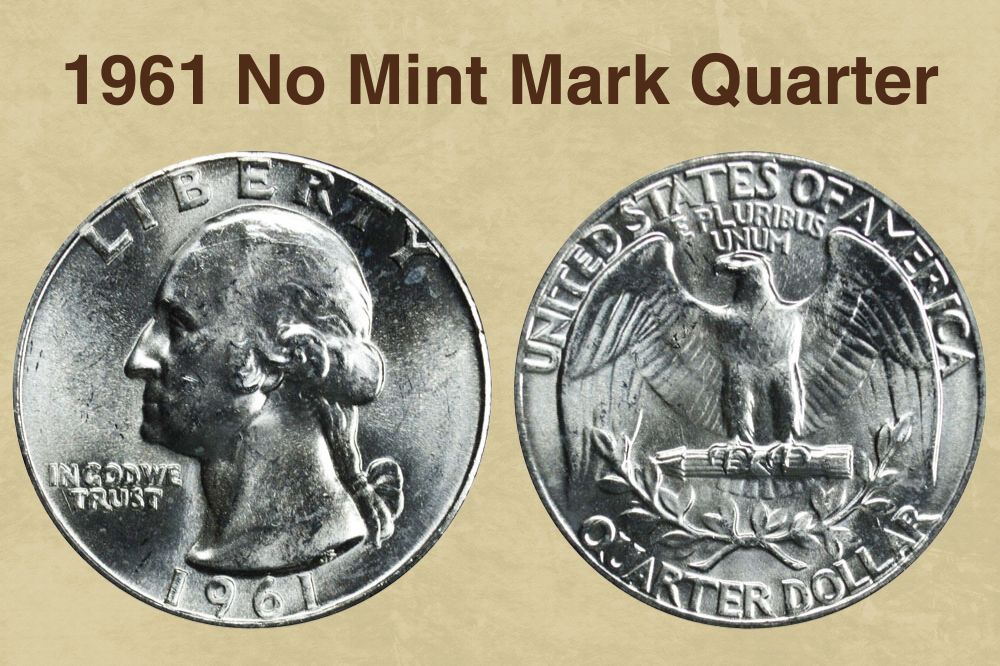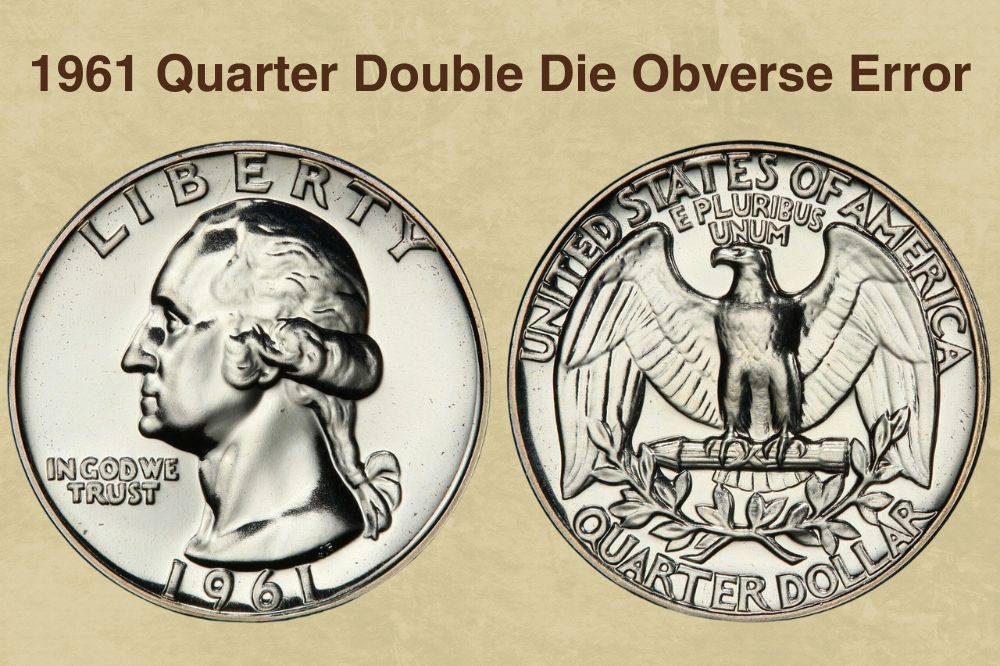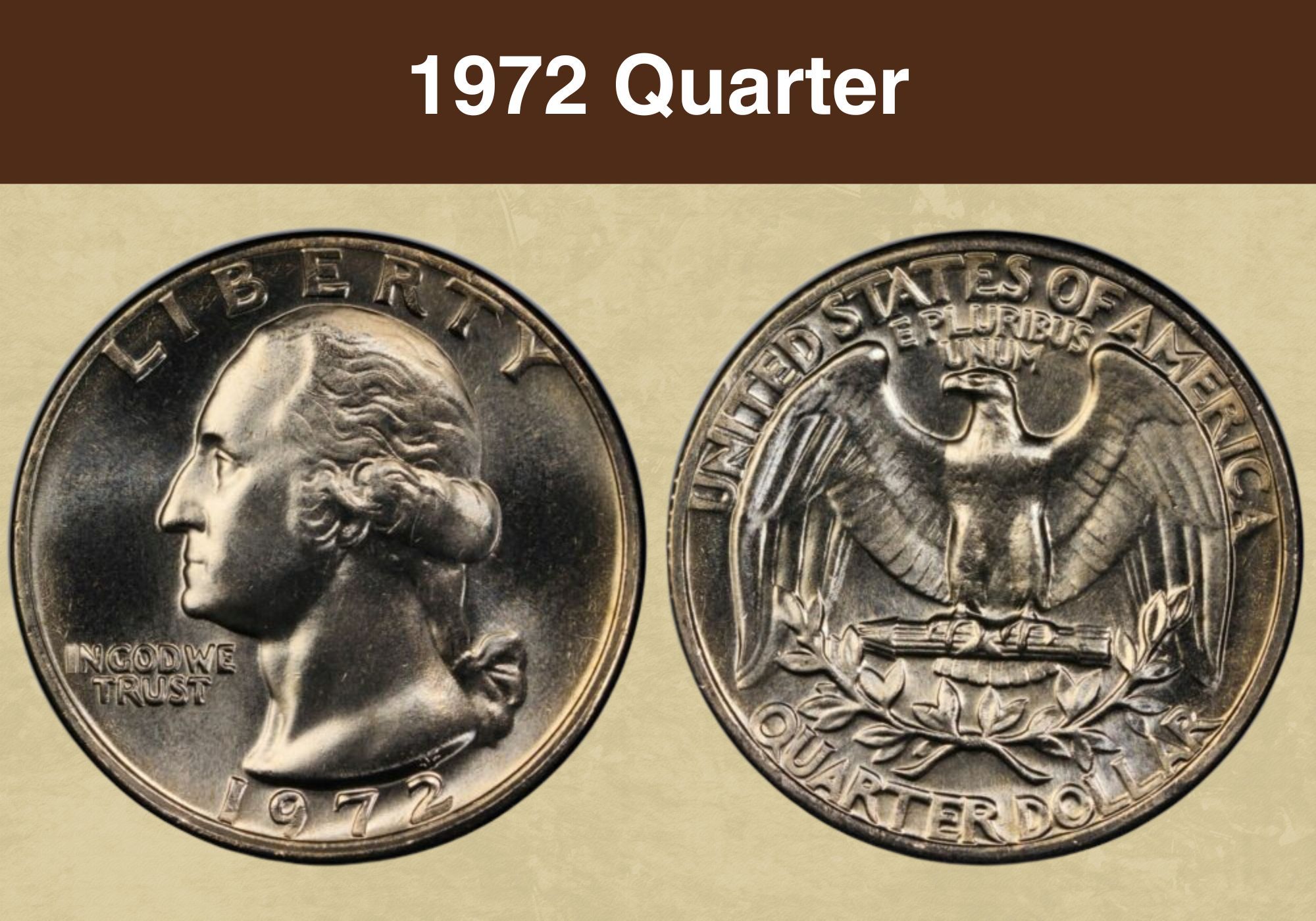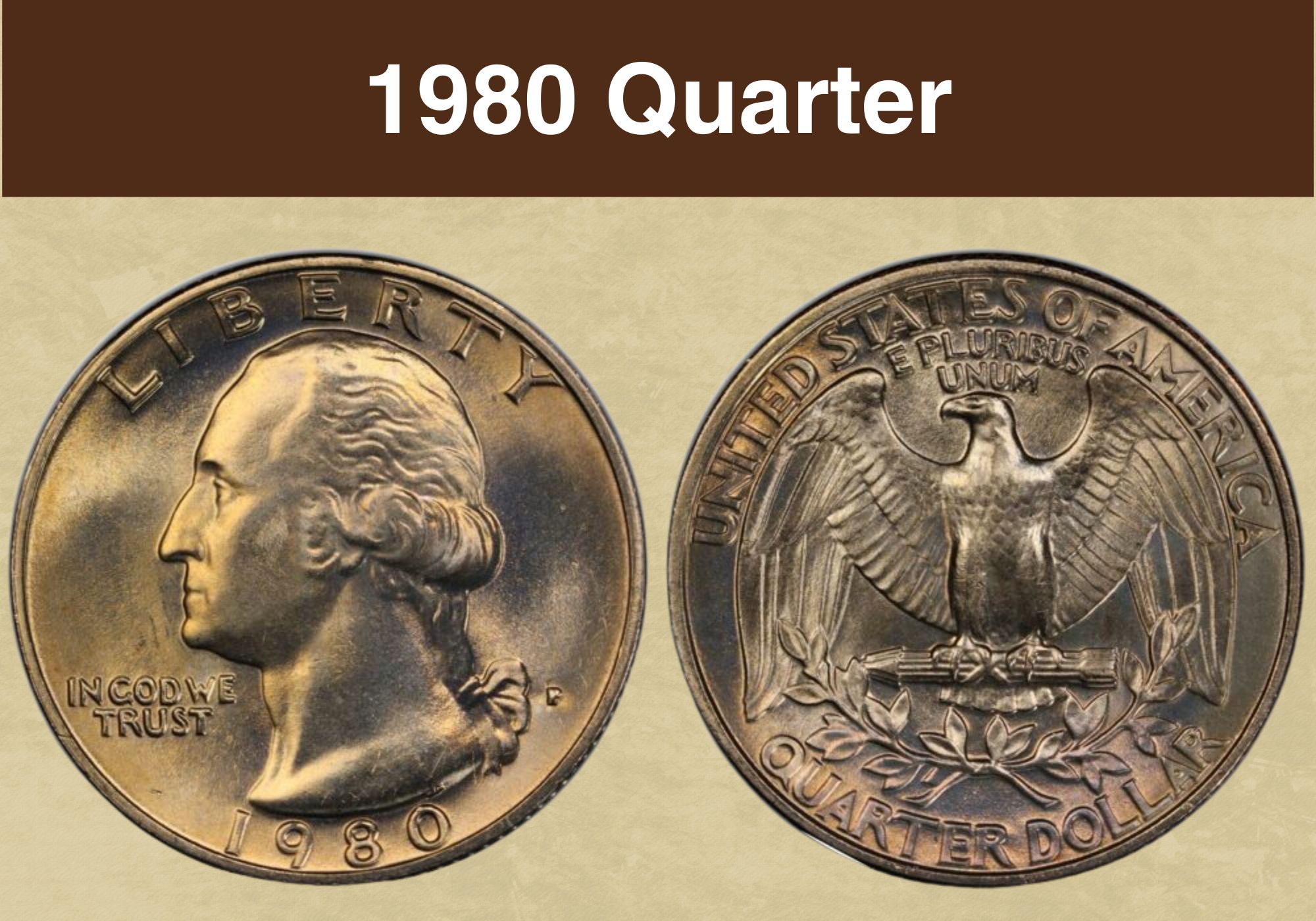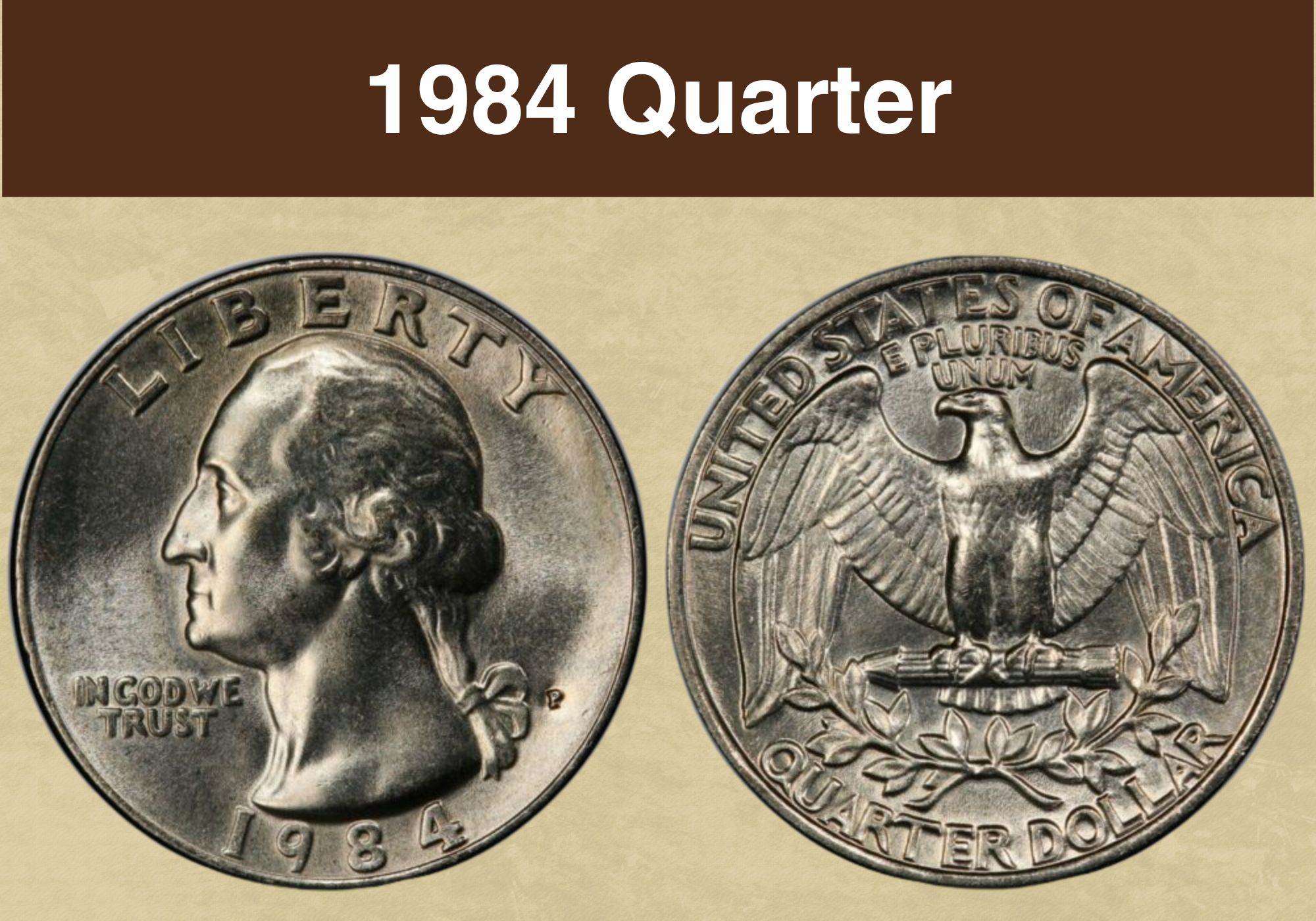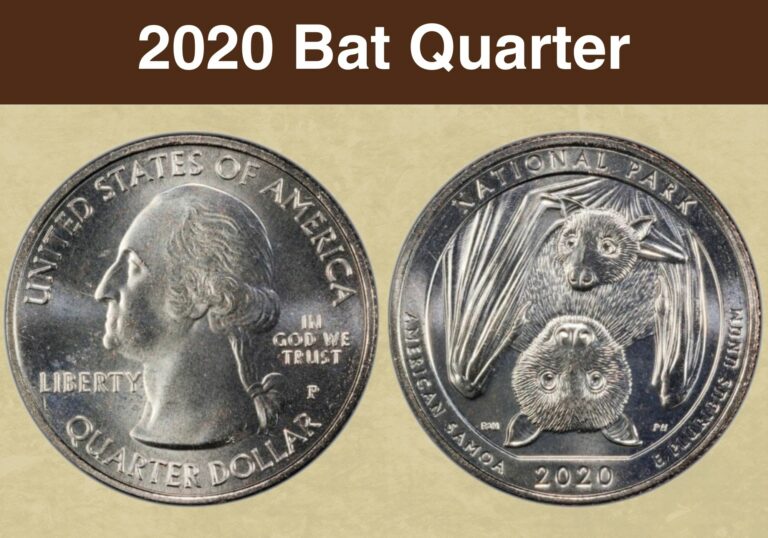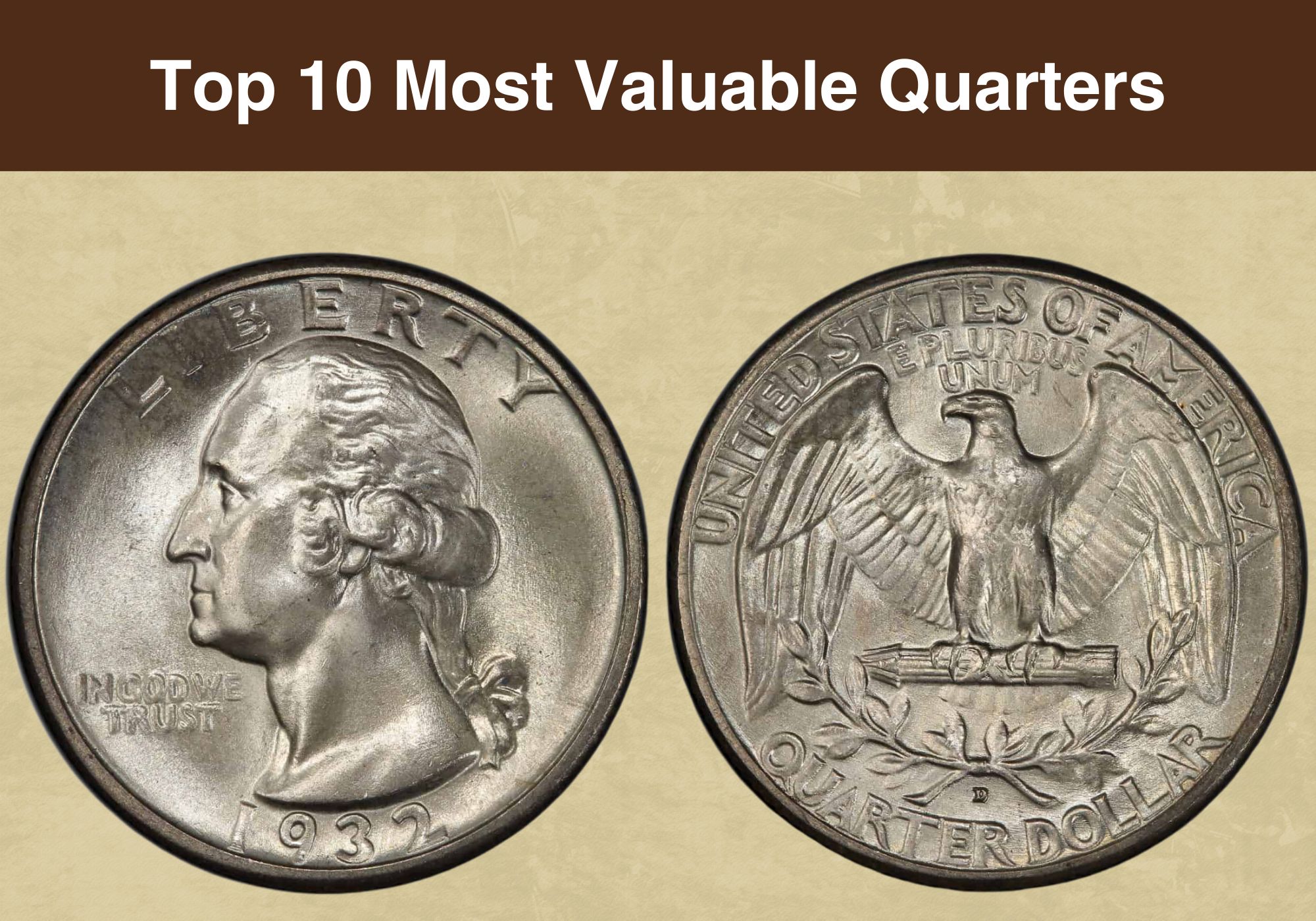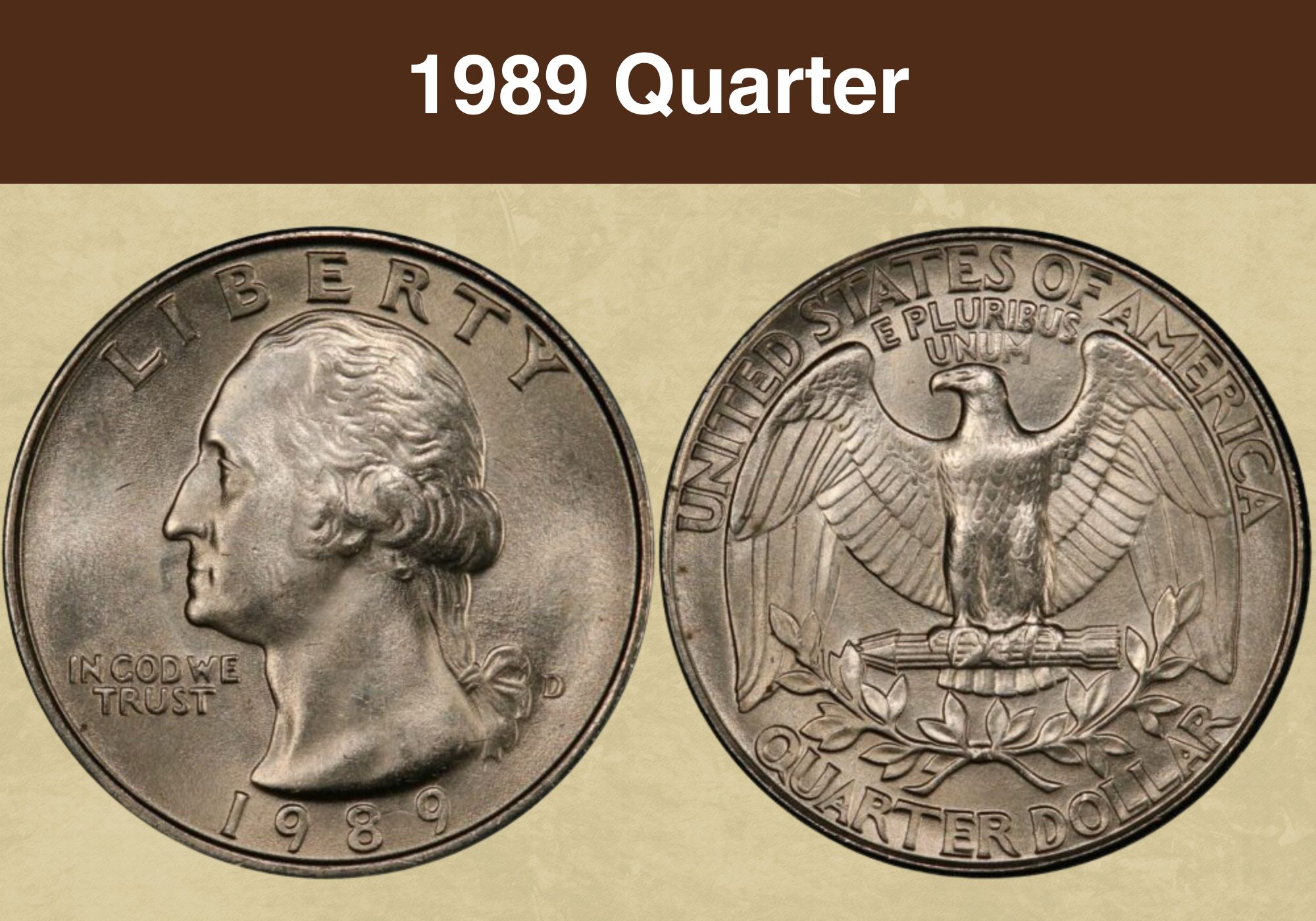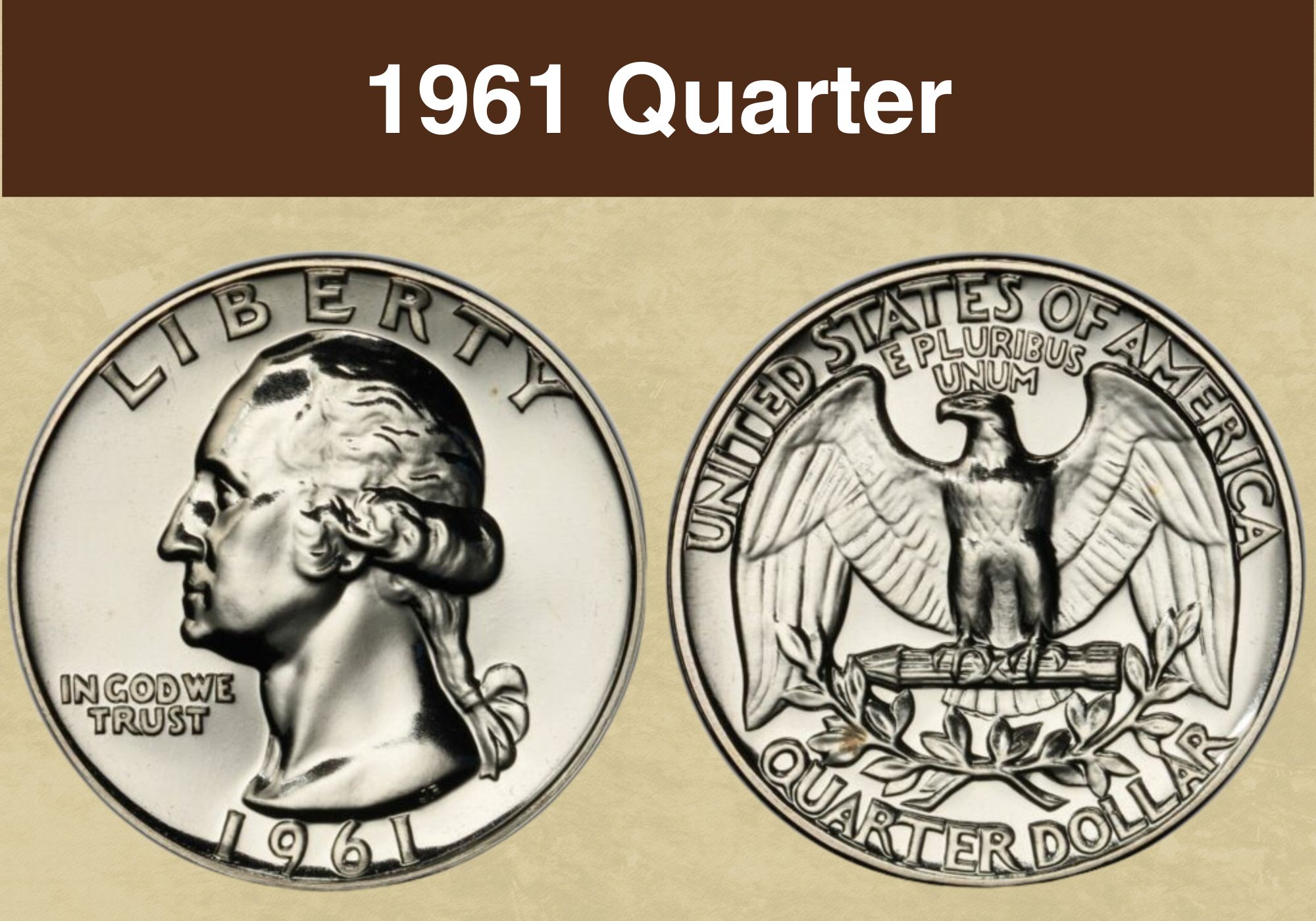
Coin Value Contents Table
If you wonder about the 1961 quarter value, you have come to the right place! The 1961 Quarter also known as Washington Quarter is one of the most beloved coins, mainly because it features one of the Founding Fathers and the first President of the US, George Washington.
1961 was one of the final years for the silver quarters as the U.S. Mint changed the metal composition in 1964. The 1961 Washington Quarter is a silver coin, which tells you something about its worth!
However, there are some other vital factors to discuss when it comes to the value of the 1961 quarter! Let’s check those out!
1961 Quarter Value Chart |
||||
| Mint Mark | Good | MS 60 | MS 63 | MS 65 |
| 1961 No Mint Mark Quarter | $5.50 | $10 | $17.50 | $30 |
| 1961 D Half Dollar Value | $5.50 | $10 | $17.50 | $30 |
| PR 65 | PR 67 | PR 68 | PR 70 | |
| 1961 Proof Quarter | $25 | $35 | $40 | $500 |
Grading 1961 Quarter
If you are a long-standing member of the coin-collecting community, you are probably familiar with the grading scale and what determines a particular grade. The grade is important because it determines the coin’s value, which is most interesting to passionate numismatists.
| # | Grade |
|---|---|
| 1 | Basal State-1 |
| 2 | Fair |
| 3 | Very Fair |
| 4, 5, 6 | Good |
| 7, 8, 10 | Very Good |
| 12, 15 | Fine |
| 20, 30 | Very Fine |
| 40 | Extremely Fine |
| 50 | About Uncirculated |
| 60 | Mint State |
| 65 | Mint State |
| 70 | Mint State |
Please check our grading guides to know your coin scale, It’s the necessary step to know the exact value of your coin.
Check out now: How to Grade Washington Quarter?
1961 No Mint Mark Quarter Value
History
The Washington Quarter was minted from 1932 to 1998 with the original obverse and reverse design developed by the famous engraver and sculptor John Flanagan. This quarter replaced the well-known Standing Liberty Quarter, produced from 1916 to 1930.
The idea behind the coin’s design was to create a coin that would honor the legacy and contribution of the first American president. Furthermore, the year 1932 marks the bicentennial of Washington’s birth, so the members of the bicentennial committee requested a Washington half-dollar.
The committee initially hired another sculptor, Laura Fraser, to design the commemorative medal, adapt that design, and use it for the new quarter. Even though the committee supported her work, the Treasury Secretary chose Flanagan’s design over Fraser’s.
These coins began circulating in August 1932, and they were initially made of silver until 1964 when the metal composition changed to an alloy of nickel, clad, and copper. In 1999 the Washington Quarter was replaced by the commemorative quarters, which were a part of the 50 State Quarters Program.
Interestingly, the US Mint preferred placing Liberty or other images with symbolic meaning on the coins rather than a real person. Washington and Benjamin Franklin believed that placing kings and queens were reminiscent of the colonial period when they had coins with depictions of British royalty.
However, that changed in 1909 when the US Mint and the committee chose to place Abraham Lincoln on the 5-cent piece, making him the first real person to be featured. The second individual to appear on the American coins was George Washington in 1932.
Also read: Top 13 Most Valuable State Quarters Worth Money
Obverse
The coin’s obverse features Washington’s bust facing left, with the capitalized inscription “LIBERTY” struck alongside the upper rim. On his left, the American motto, “IN GOD WE TRUS,” is underneath his chin. The mintage year is on the lower rim, struck in the center “1961”.
Compared to the reverse design, the obverse is pretty simplistic.
Reverse
The reverse highlights the image of the outstretched American Bald eagle in the center, holding arrows in his talons. The Laurel wreath underneath the arrows encircles the eagle.
Above the eagle’s head, the second motto, “E PLURIBUS UNUM,” means “Out of one, many.” Alongside the upper rim is the capitalized inscription “UNITED STATES OF AMERICA.” The denomination “QUARTER DOLLAR” is placed on the lower rim.
Other Details
The metal composition of the 1961 quarter is 90% silver and 10% copper. The coin’s diameter is 24.3 millimeters and 1.75 millimeters thick. The weight is 6.26 grams, and the coin’s edge is reeded. The face value of the 1961 quarter is $0.25.
The total mintage number or quantity produced in 1961 is 120,692,929. Silver weight is 1808 oz.
These quarters were produced in Philadelphia and Denver in 1961, meaning no other varieties exist. The San Francisco Mint was closed from 1955 to 1964. The highest mintage was in Denver.
Mintage and Value
The Philadelphia Mint produced 37,036,000 quarters. These do not have a mint mark; the Philadelphia Mint started placing the “P” mint mark in 1979, so all the coins produced there before were struck without the mark.
The value of the 1961 No Mint Mark quarter in fine or average condition is between $5.50 and $8. As with most coins, the 1961 No Mint Mark quarter is mainly sought-after in certified mint state condition such as MS 60 or higher.
For the 1961 No Mint Mark quarter in MS 60, you can expect to pay about $10. The same specimen in MS 63 can cost around $17.50. In MS 65, 1961 No Mint Mark quarter can cost about $30.
According to the Professional Coin Grading Service (PCGS), the 1961 No Mint Mark quarter in MS 65 was sold in 2009 in an auction for $15, and the same specimen in the same condition was sold for $326 in an auction in 2021.
The most attractive is 1961 No Mint Mark quarter in MS 67 or MS 67+, the highest grade for this variety. According to PCGS, they have graded only two of these, making them very valuable and collectible. In MS 67, 1961 No Mint Mark quarter can cost between $240 and $2,600.
The 1961 No Mint Mark auction record for this coin in the highest grade, MS 67+, is $9,777. The auction took place at the Heritage Auction in 2009.
1961 D Quarter Value
As noted, the Denver Mint had the highest mintage in the series-83,656,928. The coins produced in Denver have a specific “D” mint mark on the reverse. If you wonder where the mint mark is on your coins, check the reverse, underneath the Laurel wreath, or above the denomination.
Therefore these coins are slightly less valuable than their counterpart without the mint mark. In average or fine condition, the 1961 D quarter can fetch around $5.50 to $8. Similarly to the 1961 No Mint Mark quarter, these are collectible in mint states.
In MS 60, the 1961 D quarter can cost around $10; in MS 63, the same variety can reach $17.50. In MS 65, the 1961 D quarter can fetch $30. In MS 66, 1961 D quarter can cost about $150.
For the 1961 D quarter in MS 66+, you can expect to pay between $60 and $800. The most attractive pieces are those in MS 67 and MS 67+, which are rare and thus expensive. The 1961 D quarter in MS 67 can be worth between $1,000 and $3,700.
In the highest grade reported for this variety, the 1961 D quarter can reach a price between $3,000 and $24,000. The auction record for the 1961 d quarter is $24,000 at Stack’s Bowers in 2019. The value of these coin varieties depends on several factors.
Besides the mintage number, coin availability, mint mark, the level of preservation, designation, or error, the demand for a certain coin also dictates the price.
When it comes to these auctions, they are a volatile market to sell or buy because the buyers can drive down or drive up the price in accordance with their idea of the product’s worth. Therefore, you can note a very rare coin being sold for $13, and the same coin can reach $300 in a different auction.
Also, some coins were sold 10 years ago or more, and the market has changed so that some coins can be worth more but can be worth less.
If you have issues understanding the grades and their meaning, here is a simple explanation. The coins (including proof coins) are graded on the Sheldon scale, established by renowned numismatist and coin expert Dr. Sheldon.
Then scale assigns grades to coins depending on their condition, ranging from 0 through 70. The grades have abbreviated points such as F (fine), G (good), VG (very good), and so on.
If you need help distinguishing the grades and getting a more detailed look into the factors determining the grade and thus value, click here. Remember, grading is subjective, and numismatists often disagree on values and worth!
If you think you have a valuable coin, it is best to have it graded by PCGS or some other well-respected and certified agency.
1961 (PF) Proof Quarter Value
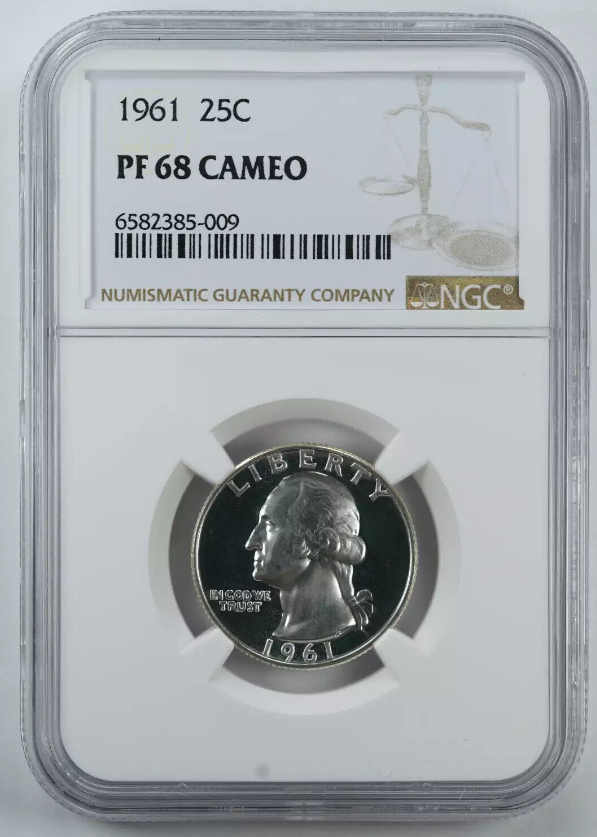
The Philadelphia Mint also produced proof coins or proof quarters in 1961; the total mintage is 3,028,244. Generally, the proof coins, the early specimens of a certain coin made to test the dies and for archival purposes, are highly valuable and sought-after.
However, that is not the case with the 1961 quarter, although there are a few exceptions. The proof coins are graded on the Sheldon scale, just like regular coins, and they usually have abbreviated PR or PF preceding the grade to indicate that it is a proof coin.
Since proof coins are made differently from regular coins, they have a more quality strike, pronounced details, and better appearance; hence they are graded from 60 to 70 on the Sheldon scale.
In PR 65, the 1961 quarter can cost $25; in PR 67, the same quarter can cost around $35.
The 1961 proof quarter has a low price because these are easily available, despite the seemingly low mintage number.
In PR68, the price of the 1961 proof quarter can reach around $40. In the PR 70, the highest grade on the scale, the price of the 1961 proof quarter is about $500.
According to the PCGS, the most recent purchase of the 1961 proof quarter in PR 70 was in 2017, and the collector paid $200 for the coin.
Also read: Top 16 Most Valuable Modern Quarters Worth Money
Rare 1961 Quarter Error List
The Washington Quarter is one of those coins known for having several errors, some of which can be very valuable and others not so much! So, let’s check those out!
1961 Quarter Double Die Obverse Error(DDO)
The double die obverse is an error that occurs during the minting process. The coins ended up with this error because of the faulty manufacturing process. The die used to strike the coin changes its position during the hubbing process, resulting in a doubling effect.
This error usually appears on other coins minted that year because the doubling is transferred to every coin stricken with that die. This error can be very valuable, but ultimately, the condition of the coins will determine the price.
The 1961 proof quarter in PR 67 with the double due obverse error was sold for nearly $400, while another similar specimen with DCAM designation was sold for $580.
However, as you know, auctions are a volatile market, and in 2022 the 1961 proof coin with the same designation and grade was sold for only $84.
1961 Quarter Struck on a Nickel Planchet Error
If you are familiar with the minting process, you might know there are different coin sizes and planchets, round metal discs on which the design is struck. Sometimes a coin is struck on a planchet intended for a half dollar or nickel, as in this case.
So, the error struck on a nickel planchet is the 1961 quarter with the size and weight of the nickel, which is around 5 grams. This error is mainly restricted to the 1961 D quarter, or in other words, those coins that were minted in Denver.
This is a very valuable error and will pump the quarter’s price. The 1961 quarter in AU 50, struck on a nickel planchet, was sold for $280.
1961 Quarter Struck on a Penny Planchet Error
As mentioned, the “struck on a penny planchet” error happens when the wrong planchet is used for striking the coin. In this case, the 1961 quarter is struck on a penny planchet or one-cent coin instead of the quarter planchet. As noted, these errors tend to be valuable.
The penny planchet is smaller than the quarter one; hence the 1961 quarter with this error usually has some inscriptions or designs missing on the coin. Also, the weight and the metal composition are different.
As you might know, pennies are made of copper, zinc, and tin; hence, the 1961 quarters with this error have a wonderful brown toning. The 1961 D quarter struck on a penny planchet error in MS 63, and RB designated was sold for $1,800 at the Stack’s Bowers Galleries.
1961 D Quarter Re-punched Mint Mark Error
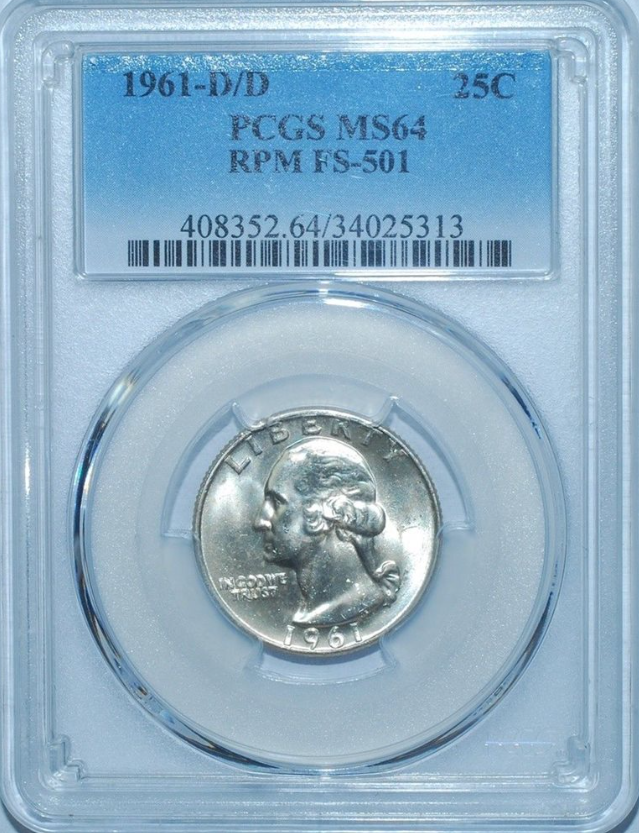
Re-punched mint mark error happens when the die used for striking the mint mark leaves a doubling effect. The second strike is usually at a different or wrong angle. This error is only restricted to the variety minted in Denver because that is the only variety with the mint mark in this series.
This is a highly desirable error, and in MS 65, the 1961 D quarter with re-punched mint mark error can cost around $500.
Also read: 17 Most Valuable Quarter Errors Worth Money
Where to Sell Your 1961 quarter ?
Now that you know the value of your coins, do you know where to sell those coins online easily? Don’t worry, I’ve compiled a list of these sites, including their introduction, pros, and cons.
Check out now: Best Places To Sell Coins Online (Pros & Cons)
1961 Quarter FAQs
What is the error on a 1961 proof quarter?
The most common error in the 1961 proof quarter is the double die obverse, often abbreviated as DDO. As noted earlier, this error happens due to a faulty manufacturing process and leaves a doubling effect on certain design elements.
What is the worth of a 1961 quarter?
The 1961 quarter, in good condition, can be worth around $6 to $7. The most attractive are rare pieces in high mint states with errors, such as a re-punched mint mark or double die obverse. Ultimately, this is a silver coin, so you can always get its worth in silver weight.
Are 1961 coins silver?
Yes! The 1961 quarters were made of 90% silver and 10% copper. The composition changed in 1964 when the US switched to 75% copper and 25% nickel coins.

